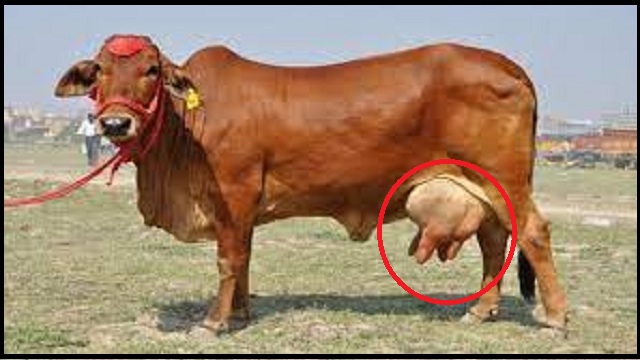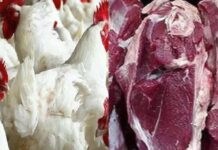
Dr. Suchayan Chowdhury, Agricare24.com: Dairy farmers are suffering from mastitis. There are very few farms that have not suffered from mastitis due to cow farming. This disease can cause serious disasters on farms. But if you take 10 simple steps, you can easily prevent this disease. But first you need to know what mastitis disease is?
Mastitis: Mastitis is a problem in the udder or udder of a cow, which is called inflammation in the language of science. If the tissues of the uterus are affected for any reason, then the udder swells and the milk production is disrupted and even stops completely, which can lead to various complications in the cow’s body. This disease can usually be caused if the udder is directly injured, if harmful chemicals enter the udder, or if the udder is infected by a bacterium, virus, or fungus.
Here are 10 easy ways to prevent this disease. I hope you can protect your farm.
- Clean and tidy farms: Cattle farms should be kept clean and tidy at all times. So that the cow can be at ease at all times. If the cow is at ease then the hormone oxytocin can be secreted well. This hormone secreted by the cow’s head plays a major role in producing more milk. On a clean farm, the amount of harmful germs that can cause mastitis is greatly reduced.
The farm floor needs to be cleaned regularly. In very hot, very humid weather, care should be taken to keep the cow comfortable. If any kind of bed is provided for the cow, care should be taken that it is made of inorganic material. Due to inorganic substances harmful germs grow less.
- Clean udder: In order to keep the farm free from mastitis, cow udder must be kept clean. Milk nipples must be thoroughly cleaned before milking. This prevents harmful bacteria from getting into the udder and udder during milking.
There are many types of bacteria that adhere to soil and dung. Of these, Streptococcus, E. coli and Cyanobacteria are very deadly. Those can easily reach udder through Brant. When soil, dung, etc. are attached to the udder, they start moving around the bant. Therefore, before milking, it is necessary to clean the dirty garbage in udder. Otherwise, whenever there is pressure on the udder for milking, these bacteria can enter the udder through the udder and make udder sick.
Various germs harmful to udder can also be transmitted through water. Therefore, care must be taken in the use of water. In the case of excess mud and dung on the slopes or ditches, it should be washed well with water. Water cannot be given loudly. And the less water you can use, the better.
The tube or container through which the water is given can carry thousands of germs, which is enough to destroy the water. Among them, Pseudomonas bacteria are very deadly. So these pipes need to be cleaned well before each use. Moreover, water cannot be stored after use.
- Olan (udder) testing: Olan (udder) should be thoroughly tested every time before milking. A lot of the time, the sores on the nipples are torn, and so on. If there is such a problem, the milking machine cannot be used in those parts. There is a higher risk of mastitis in all these parts. Therefore, if any kind of abnormality is seen in the distribution, treatment should be arranged as soon as possible.
- Cleaning the udder before milking: The udder should be dipped before milking with any good disinfectant. This will reduce the amount of harmful germs scattered in udder. This will greatly reduce the risk of developing mastitis. Immerse the udder in the disinfectant for at least 20 seconds. More fruit is obtained by dipping than by spraying with disinfectant.
The container in which the dish is to be washed with disinfectant should be thoroughly cleaned. Once immersed, the remaining liquid should be discarded. Otherwise, the container itself may be a carrier of bacteria. Which can infect new cows.
5. Cleaning and wiping the wick: After dipping the germs, the wick should be wiped dry with a clean towel or cloth. If possible, use a separate cloth or towel for each cow. Care should be taken to ensure that no soil, dung or any other substance is attached to the mouth of the udder or bant.
The milking machine works well when the udder is dry. If the udder is not properly cleaned and dried then the udder may get sore, tear, and sore during milking. This can lead to mastitis and bacterial overgrowth.
6. Milk test / milking before setting up the machine: Before setting up the milking machine, you have to check with a little milk from each udder to see if there is any kind of normality. As a result, the exact condition of the milk and the condition of the udder is known before the milk is collected. Another advantage of this. It stimulates the secretion of the hormone Oxycontin. The hormone Oxycontin is closely related to milk production and milk production.
This can be done before or after washing with disinfectant. However, each method is beneficial for dairy farms.
7. Proper use of milking equipment: People who will use milking machines must be well trained in this regard. You need to know how to install this device, how to disassemble it. When installing the milking machine, care should be taken not to accumulate any kind of air. Monitoring during milking: All work should be well supervised during milking.
8. Eating habits: After milking, the cow should be kept busy with food. So that the cow stands. During milking, the milk ducts become larger. Which often takes up to an hour to become normal. So it is better to keep the cow busy at this time.
- Vitamin E and selenium in the diet: Vitamin E and selenium are very important for the protection of cow’s udder. Therefore, adequate supply of Vitamin E and Selenium should be ensured in the daily diet of cows.
Dr. wrote the article titled 10 Ways to Survive Mastitis in Dairy Farms. Suchayan Chowdhury Veterinary Surgeon, Upazila Livestock Department Rangamati Sadar, Rangamati. bangladesh.























